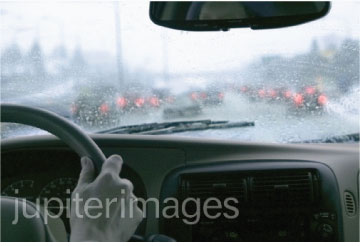During the summer months, the right type of training and adequate protection can go a long way toward keeping workers safe outside, where workers are exposed to heat stress and UV radiation, pest-borne diseases, and poisonous plants .
Timing can be everything. While you can’t always choose your hours or work locations, you may be able to plan your workload to avoid overheating. Schedule your heaviest work for the coolest parts of the day. In the summer, sunlight exposure is greatest between 10 am and 4 pm. Many workers start their day very early in the morning, and quit before the hottest time of the day starts, or return to work in the evening hours. If you are working between 10 am and 4 pm, take several breaks during those hours, in a shady place.
Stay hydrated. When it’s hot, you must remember to drink enough fluids. Drink before you get thirsty, because once you become thirsty, you are already beginning to dehydrate. Skip drinks with caffeine, alcohol, and large amounts of sugar. Water is still the best choice, but if you are sweating a lot, drink a sports beverage to help replenish your electrolytes and prevent heat cramps.
Summer fashion advice: Wide-brimmed hats, sun glasses with side panels, and pants tucked into socks may not make much of an impression, but they can prevent any number of burns, stings, and bites. Full-length pants and long-sleeved shirts reduce bites from mosquitoes and ticks and minimize skin contact with poisonous plants. Hats and safety sunglasses protect your skin and eyes from the sun’s UV radiation. If you have a history of skin cancer, you may choose dark clothing with a tight weave, which blocks UV rays more effectively than light-colored, loosely woven clothing. However, if pests are more of a concern, wear light colors and tuck your pant legs into your socks to avoid unpleasant up-the-leg visitors. To stay cooler in the heat, wear light-colored clothing that is loose-fitting and made from a breathable material such as cotton.
Know your plants. Poison oak, ivy, and sumac are found throughout the United States. The sap oil from these plants can cause painful allergic reactions. Investigate the types that are poisonous, and avoid them. Wear long sleeves, long pants, boots, and gloves to shield your skin from contact. Also, you may consider using a barrier skin cream. Burning plants that may be poison ivy, poison oak, or poison sumac can cause life-threatening allergic reactions from the smoke.
Find out if any workers have existing allergies. In addition to knowing first aid and having first aid kits handy, supervisors should be aware if a worker is allergic to certain insect bites or stings, plants, etc., and be prepared to treat them as soon as possible. The worker should carry benadryl, or some type of allergy medicine to avoid going into anaphylactic shock.
Watch out for the critters! Tall grass, leaf litter, rocks, wood piles, and bushes are favorite hiding places for spiders, ticks, scorpions, and snakes. If possible, stay away from these areas. Wear gloves when handling brush or debris. Wear boots, pants, and long sleeves when working in tall grass or underbrush. Cut grass and remove dried leaves from around the worksite to reduce tick populations. Be cautious near piles of undisturbed materials where snakes or spiders may be. Store unused apparel and equipment in tightly closed plastic bags. An additional spider caution: they are often found living in outdoor toilets where flies are plentiful. If you are working around standing water, or where mosquitoes breed and live, be aware that some of these little pests carry West Nile Virus. This is a very serious and debilitating disease, so be sure you have insect repellent sprayed all over your clothes and open skin.
Monitor your coworkers. In addition to your own physical condition, also keep an eye on your coworkers. Learn the symptoms of heat-related illness, and watch for them in yourself and others. Understand that protective clothing or personal protective equipment may increase the risk of heat stress. Also, brush up on your first aid so you can help a coworker who may need immediate help if suffering from heat stroke or other heat-related reactions. Observe certain workers, such as older ones, that could be prone to heat stroke. Those with heart disease or other health problems may not be able to stand continuous heat very long. You and your coworkers can also help each other by inspecting for hard-to-spot creatures. Ticks, in particular, can be difficult to see, especially on your own body. Help each other inspect skin, hair, and clothes for unwanted passengers.
Use plenty of sunscreen. Last, but certainly not least, follow this advice: wear plenty of good sunscreen to block UVA and UVB radiation. Wear sunscreen with a minimum of SPF 15. SPF refers to the amount of time you will be protected from a burn. An SPF of 15 will allow a person to stay out in the sun 15 times longer than they normally would be able to stay without burning. The SPF rating applies to skin reddening and protection against UVB exposure. It does not indicate any level of protection against UVA. A good broad spectrum sunscreen will contain additional ingredients to block UVA. Ask your dermatologist what he/she recommends. Sunscreen performance is affected by wind, humidity, perspiration, and proper application. It should be reapplied at least every two hours. Some sunscreens lose their efficiency when used with insect repellent. Throw away sunscreen bottles that are more than 2 years old, as it is no longer effective.
Source: CDC



